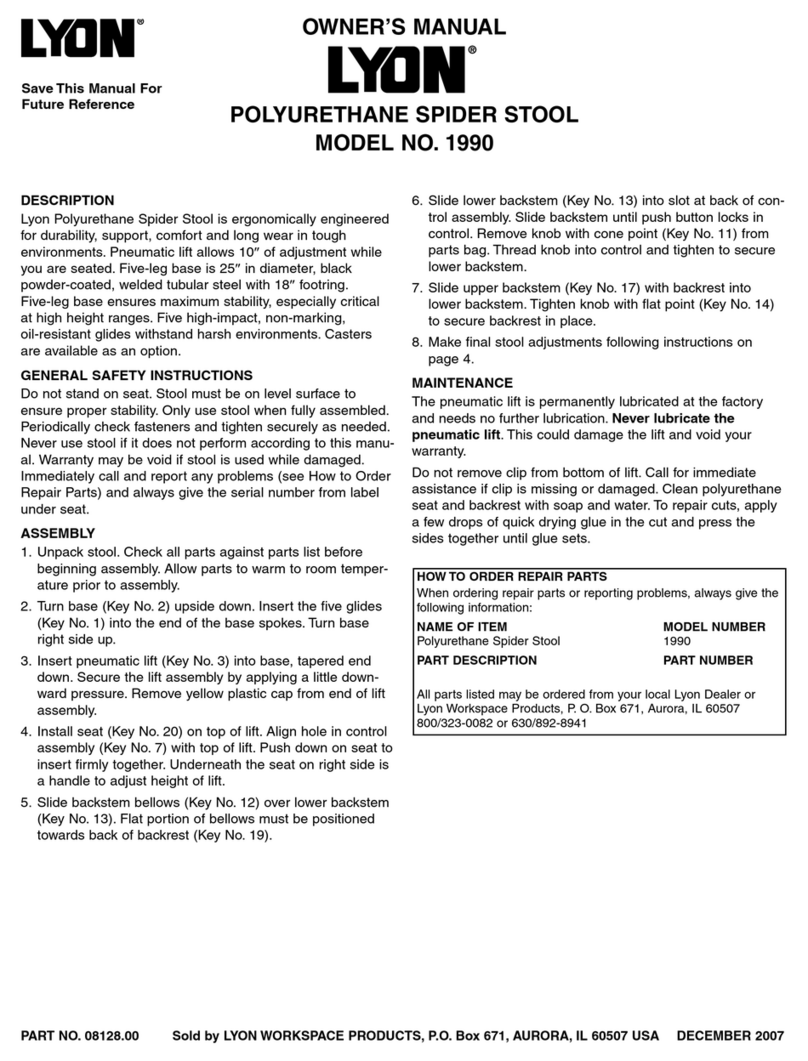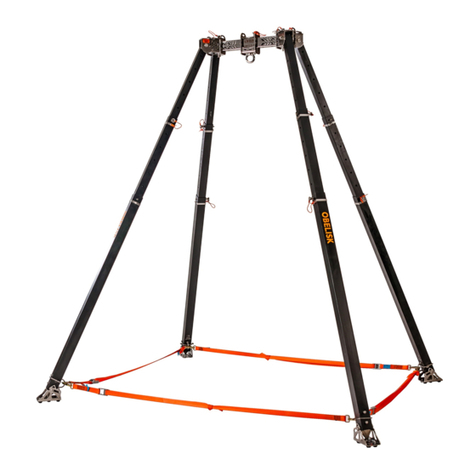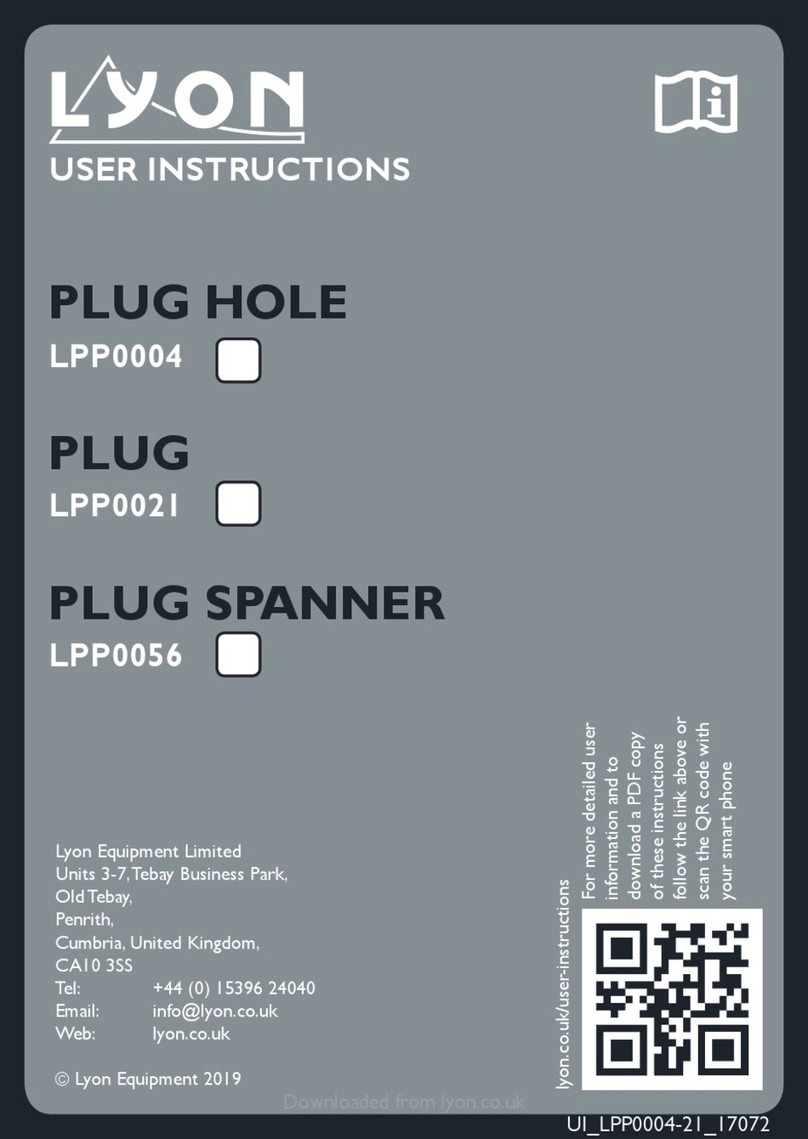
9
Transport of the dismantled
stretcher
A minimum of two people are required
to transport an empty stretcher. If split
into two sections for transport, each
section may be carried ‘rucksack style’
using the individual detachable pack
frames (accessory).
The pack frames may also be used as
carrying yokes when clipped to the
stretcher handles, to assist in transport
of the loaded stretcher.
The pack frame ts onto the stretcher
by placing the edge of the stretcher bed
into an alloy channel at the base of the
pack frame.This enables two alloy pegs
to enter two holes in the stretcher bed.
The pack frame is locked in place by
tensioning the shock cord round the
frame and attaching the hooks through
the holes in the alloy pegs.
TAKE CARE WHEN TENSIONING
THE SHOCK CORD THAT YOUR
FACE IS NOT IN LINE WITH THE
TENSIONED SHOCK CORD -
ACCIDENTAL RELEASE MAY
CAUSE INJURY.
Each stretcher section weighs approx.
9 kg. Assistance with picking up and
placing the stretcher section on the
back, and adjusting the shoulder straps
to provide a secure and stable t, is
strongly recommended.
Be aware of projections on the frame –
ensure there is adequate space around
the person carrying the stretcher
section to prevent accidental contact.
Carrying the loaded stretcher
Be aware that a loaded stretcher
(stretcher + casualty + medical
equipment) may weigh up to 136 kg.
Multiple personnel are required to
lift and transport a loaded stretcher.
Stretcher carriers should regularly
change position to reduce fatigue.Take
extra care when lifting and lowering
the loaded stretcher – training and
coordinated action is essential.
There are many methods of positioning
personnel around a stretcher to enable
it to be transported.The maximum
practical number of personnel who can
effectively share the load is eight.
Sliding the stretcher
The stretcher may be slid on its skids
over smooth surfaces. Avoid abrasive
surfaces which could damage the skids;
also avoid rocks, stumps, branches and
other hazards that could penetrate the
stretcher bed or cause discomfort or
injury to the casualty.
Lifting, lowering or suspension of
the stretcher via a rescue system
Rope rescue system anchors must be
unquestionably reliable, orientated
appropriately and of sufcient strength
for the anticipated load. Ensure all
other components in the system are
compatible and of sufcient strength.
The use of a two rope system (main
and safety) is recommended. All such
systems should incorporate a ‘fail to
safe’ principle.
UI_LMK6-ST_16347.indd 9 18/04/2019 10:57:41
Downloaded from lyon.co.uk































